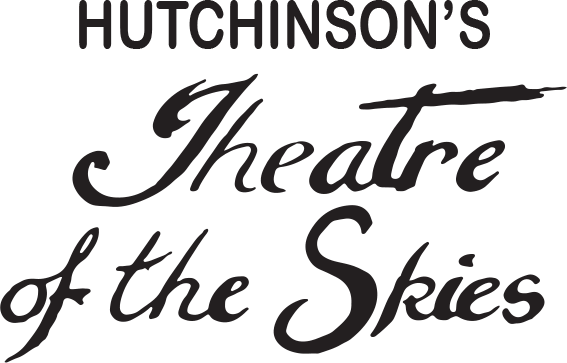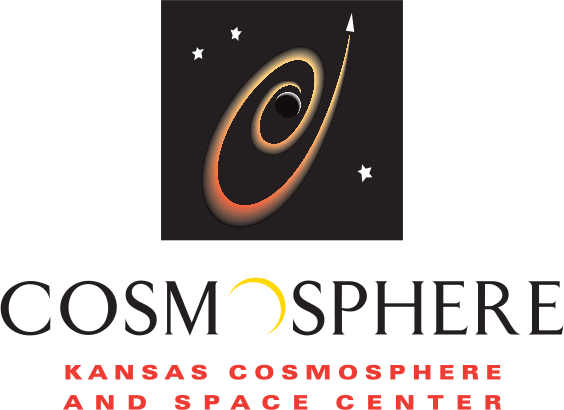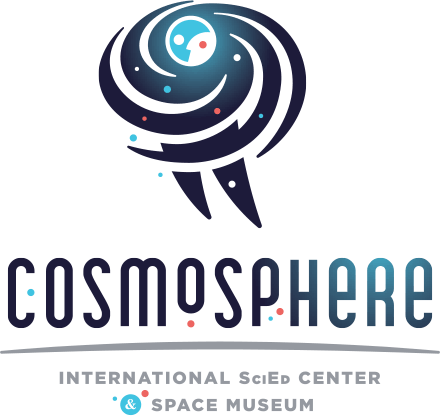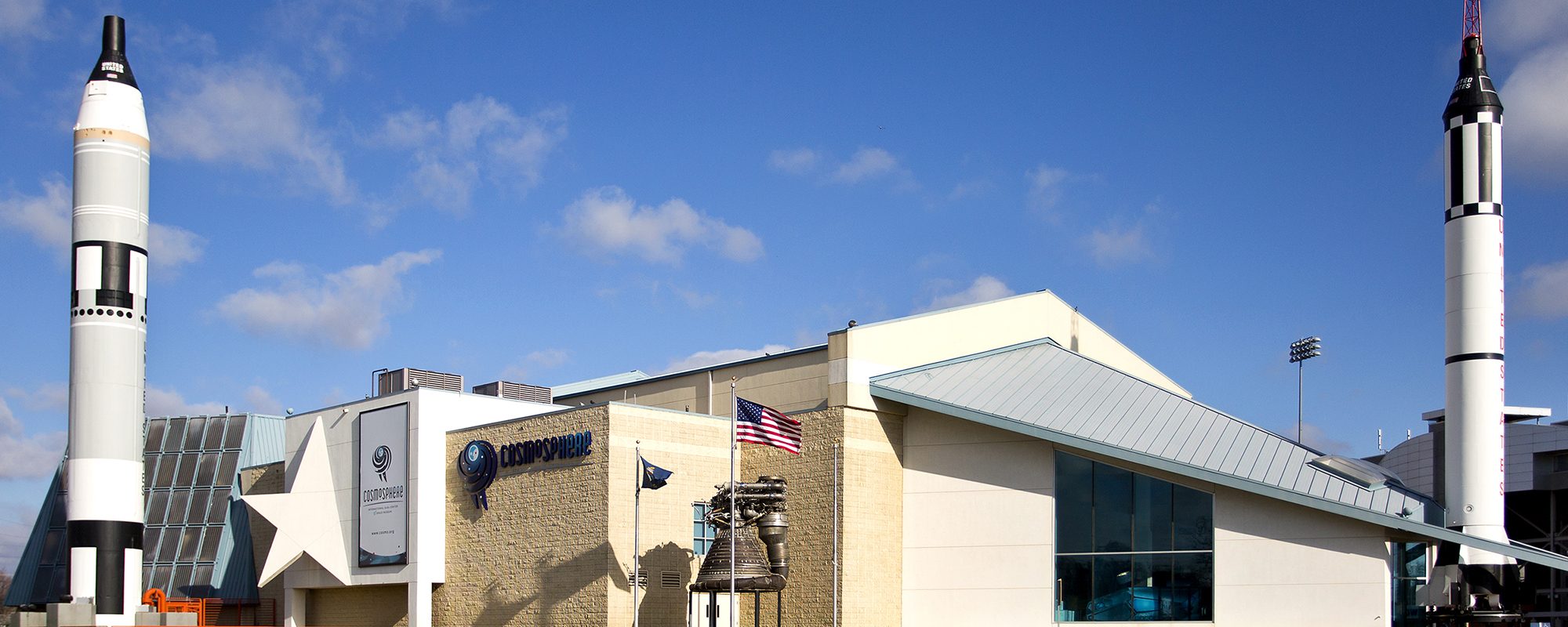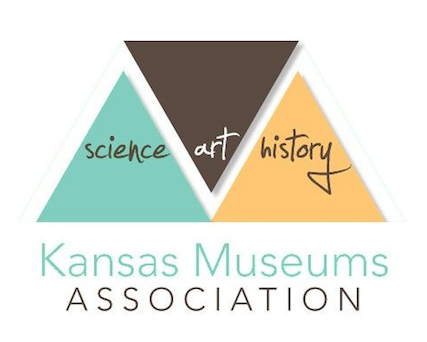Our Story
How did the “greatest space museum on planet Earth” come to Hutchinson, KS?
If we had a dollar for every visitor who has asked that question over the last 60 years, the Cosmosphere wouldn’t need any fundraising efforts!
The short answer is that it began with one woman’s vision and a community that rallied behind her cause.
Take a look at how we got where we are today and you will understand why we celebrate the first 60 years knowing the best is yet to come!
It all began in the early 1960s. Just about the same time Project Mercury was celebrating the success of John Glenn’s three successful Earth orbits, a woman in Hutchinson was launching a dream.
Patty Carey, Cosmosphere founder and president of the Hutchinson Arts and Science Foundation, loved astronomy. She felt everyone should have a chance to better understand the sky above them and the Earth on which they lived.
With that motivation, she launched her dream of opening a planetarium in Hutchinson, KS. She raised funds to purchase a used planetarium projector and dome, which was erected in the vacant poultry exhibit building on the Kansas State Fairgrounds in Hutchinson. She rented folding chairs, recruited volunteer help, and opened the door of “Hutchinson’s Theatre of the Skies” on December 2, 1962. It was the first planetarium in the state.
In 1966, Hutchinson became home to another science education first when Hutchinson Junior College (now Hutchinson Community College) invited the renamed Hutchinson Planetarium to a permanent home in its new science building. That made it the first junior college in the Nation to have its own planetarium. That space, still featuring its domed roof, is now Dr. Goddard’s Lab, where live science demonstrations occur.
The first executive director was hired in 1976 to assist the Hutchinson Arts and Science Foundation with its vision for growth. They discussed having classes for children and adults, a theater, and NASA artifacts for exhibition. As the plans began to narrow, the team decided to focus on making Hutchinson the NASA educational center of the Midwest. In October 1976, the Hutchinson Planetarium received its first major artifact on loan from the Smithsonian–the Apollo Soyuz Test Project command module trainer.
The vision and strategy continued to take shape. Following a successful fundraising campaign and rebranded as the Kansas Cosmosphere and Discovery Center, the expanded museum and education center opened in 1980 welcoming visitors from throughout the U.S. In the summer of 1985, the first summer camp experience for middle school students was launched. Called the Future Astronaut Training Program, the experiences offered have expanded to include day camps and residential camps for students entering third through 12th grade. Known today as Cosmosphere Camps, the topics range from simulated space missions to robotics coding, creating the civil procedures to support an international encampment on Mars, building rockets, flying drones and more! On average, 35 states are represented by campers each summer.
The 1980 expansion seemed to be all the Cosmosphere might need, but the growing collection of space artifacts exceeded the space in the facility. The planetarium needed to be upgraded. The summer youth camps were bursting at the seams. It was time for another expansion project.
The expanded facility opened to the public in March 1997. The new lobby featured an SR-71 Blackbird and T-38 aircraft. And even the exterior of the new building featured artifacts with the displays of a Redstone and Titan rocket to illustrate the Mercury and Gemini programs. The Hutchinson News noted that the expansion had changed the skyline of Hutchinson and would leave a lasting impression. In 1998, the Cosmosphere’s National significance was recognized as it was named as one of the first Smithsonian affiliates in 1998.
The Cosmosphere had always had a restoration crew and they often made headlines with their work on movie sets building replicas or restoring historic spacecraft. By the 1990s, their reputation had spread and led to the creation of a separate restoration, preservation and replica design division known as SpaceWorks. They created 80 percent of the props for the movie Apollo 13. They also restored the Apollo 13 command module, Odyssey. And, in 1999, they took on arguably one of the most exciting preservation projects–the recovery and restoration of the Liberty Bell 7 spacecraft, which was recovered from the bottom of the ocean after 38 years.
In 2012, Cosmosphere leadership again looked to the future and considered how to maintain the relevance of its programming and the stewardship of the space race story its artifacts tell so well. A taskforce made up of board and community members supported narrowing Cosmosphere’s focus to creating leading edge education programming and updating its museum to be more engaging. Over the next ten years, more than $7 million was invested in the building. The theater converted from IMAX to digital film in 2012; the planetarium was remodeled in 2014 and Dr. Goddard’s lab and the Cosmo Café were renovated in 2016.
The emphasis on education and engaging younger audiences in STEAM and space history was reinforced with a complete remodel of the education and camp area in 2018 including the addition of a second level in the rotunda to expand programming. In 2020 an interactive STEAM area for children called CosmoKids opened. It is free to Reno County residents or to any patron with a ticket to the Hall of Space Museum.
Gallery updates continue. By 2025, the Cosmosphere will be completely updated…and ready for new growth. And it will be here on the corner of 11th and Plum St. The stewards of Cosmosphere’s future believe just as Patty Carey believed, that the best in science education center and space history should be accessible to everyone. And so it is, that the “best space museum on planet Earth” is in the heart of the heartland—in Hutchinson, Kansas.
Patty was there every step of the way as the Cosmosphere changed, grew and renovated. In 2002, she was honored by an educational endowment in her name and a mural by famous space artist, Robert McCall. McCall’s mural, entitled Dream, tells the story of the Hutchinson Planetarium to the Cosmosphere, highlighting the vision of Patty Carey. In 2003, she passed away on New Year’s Day.
Our Mission
Inspire the future through space exploration.
Our Logos
Explore our identity from 1962 to present.
